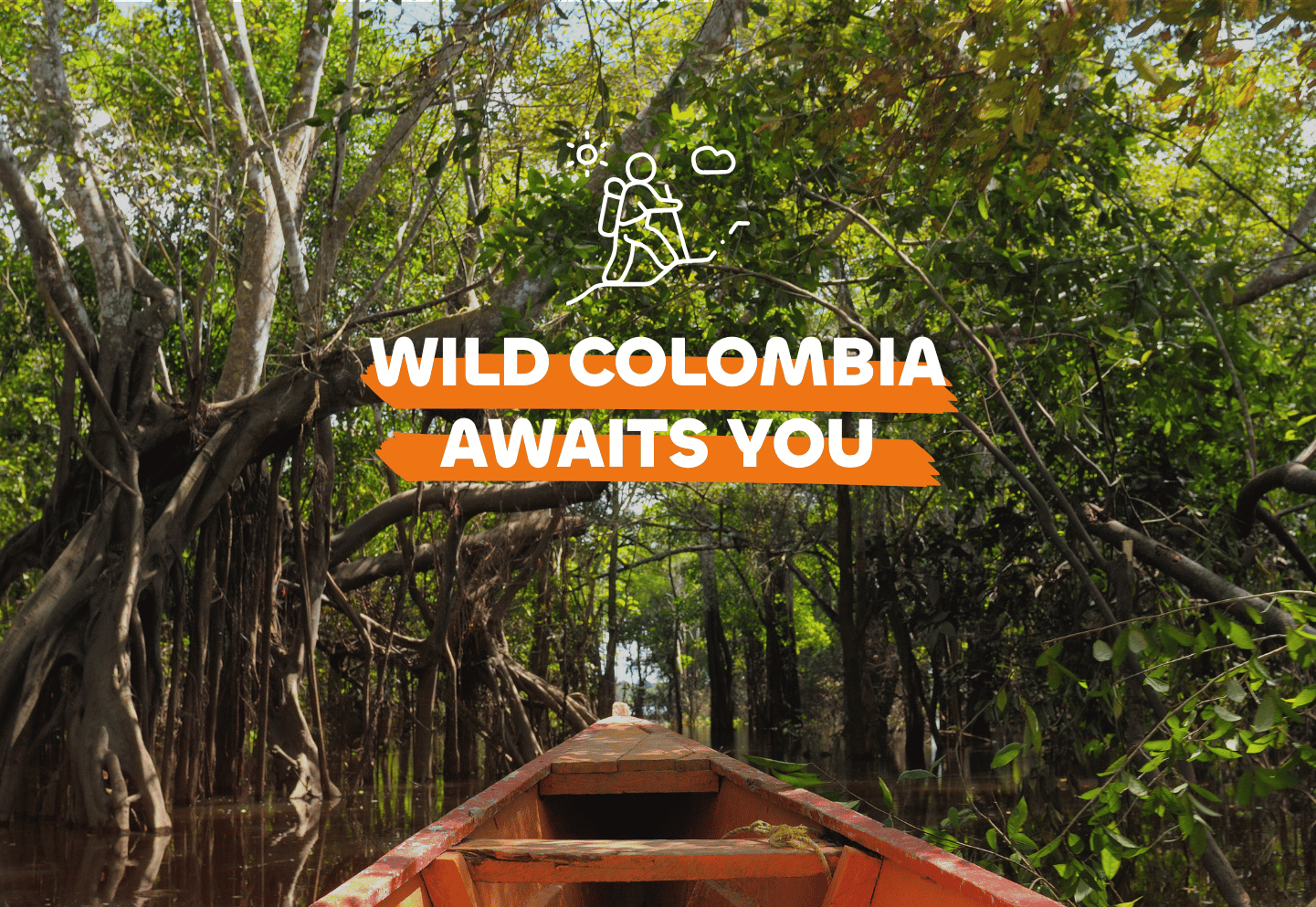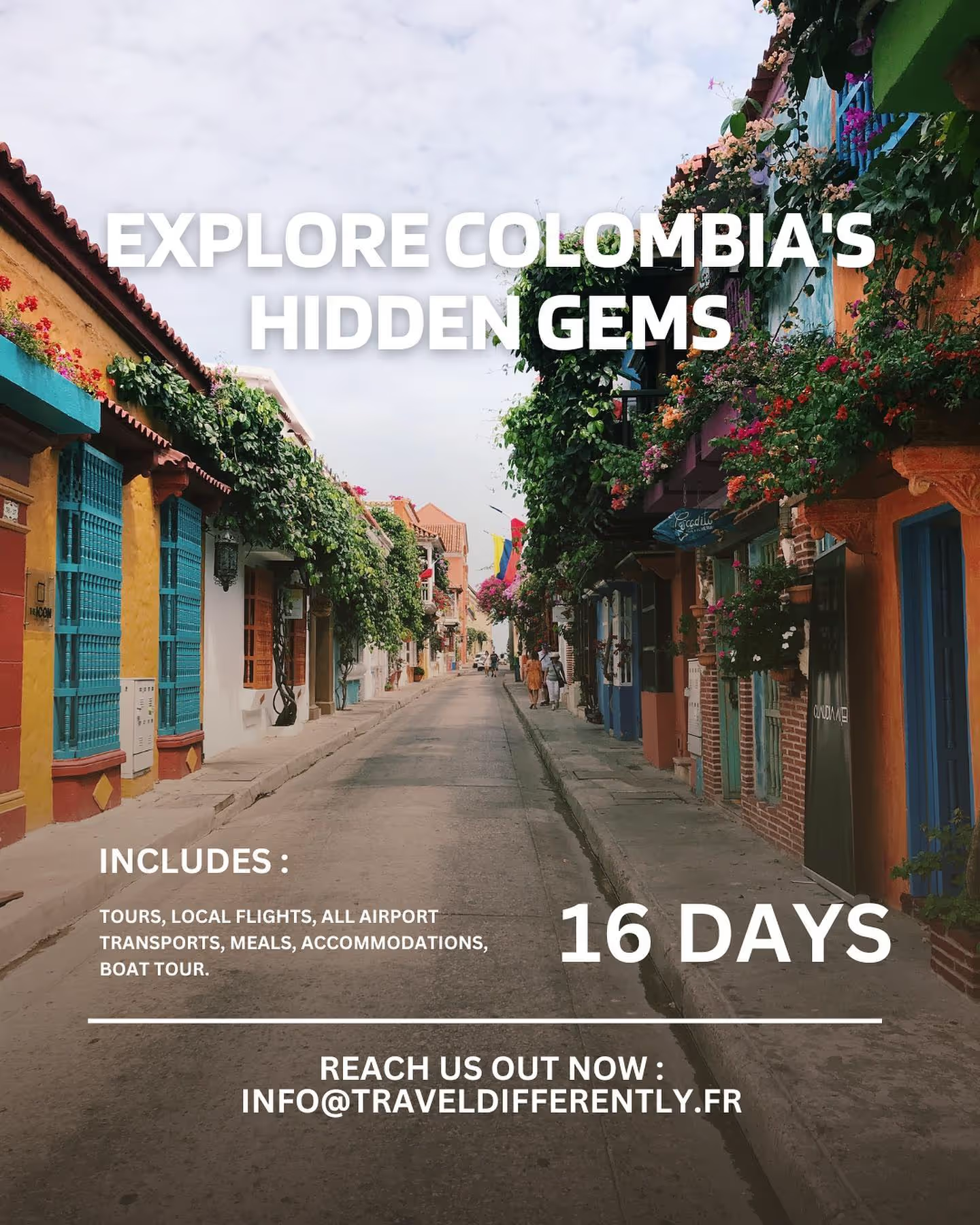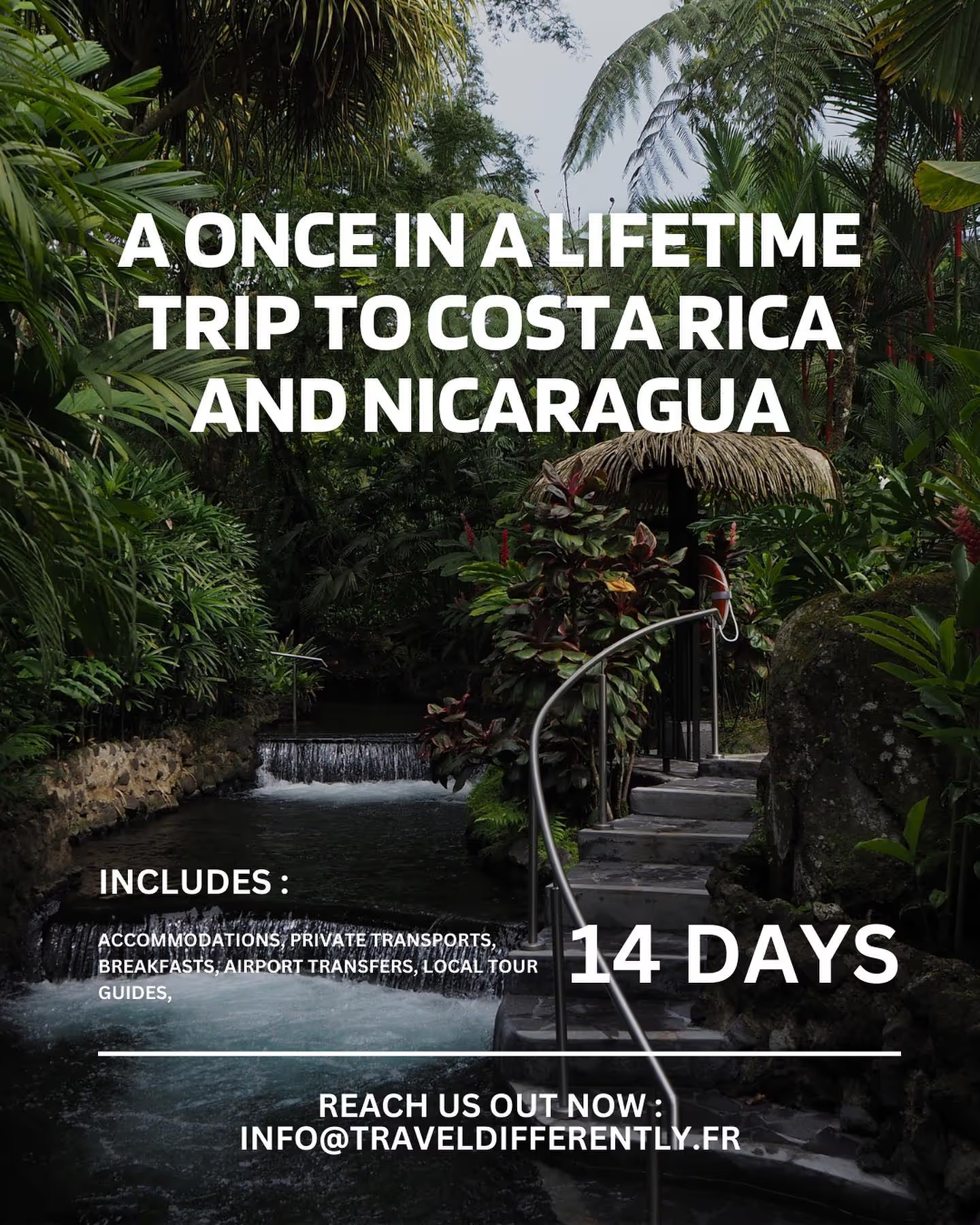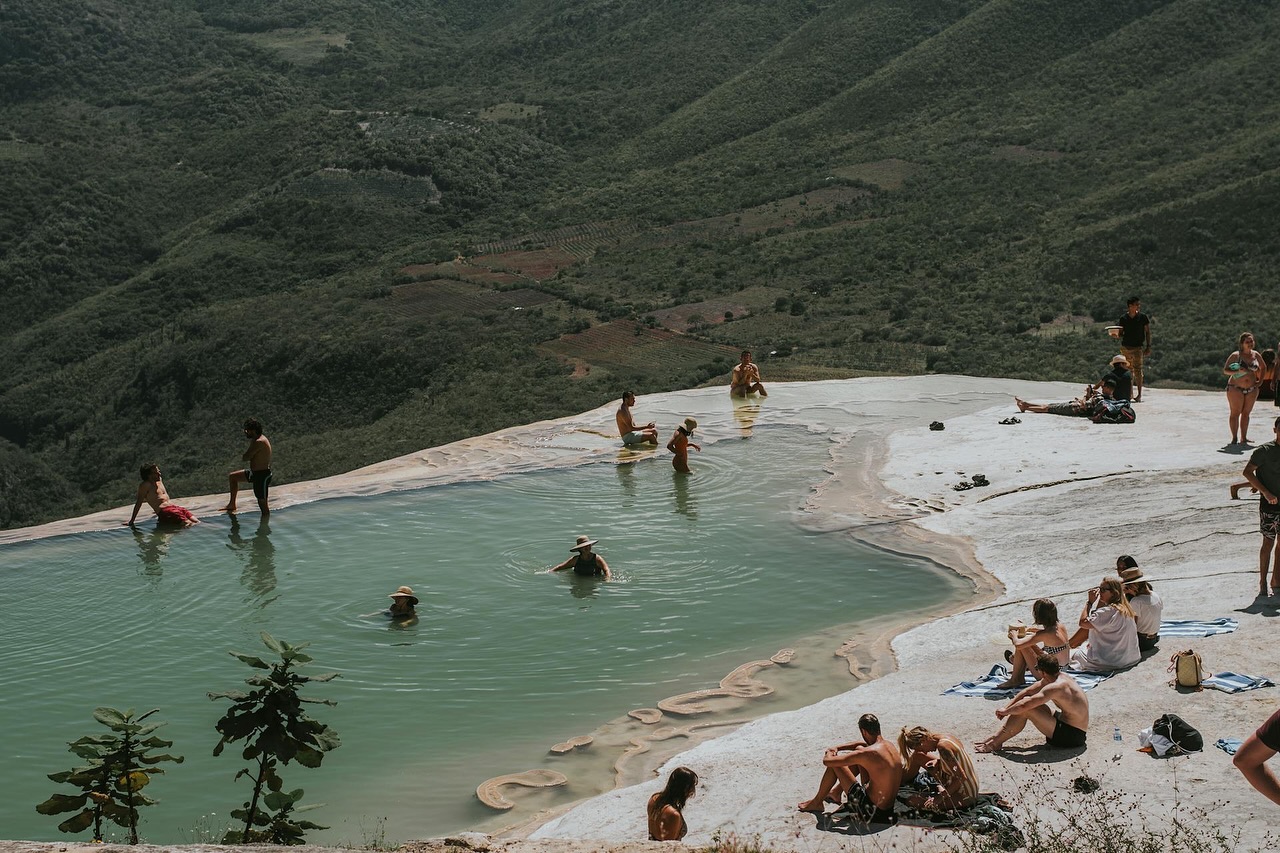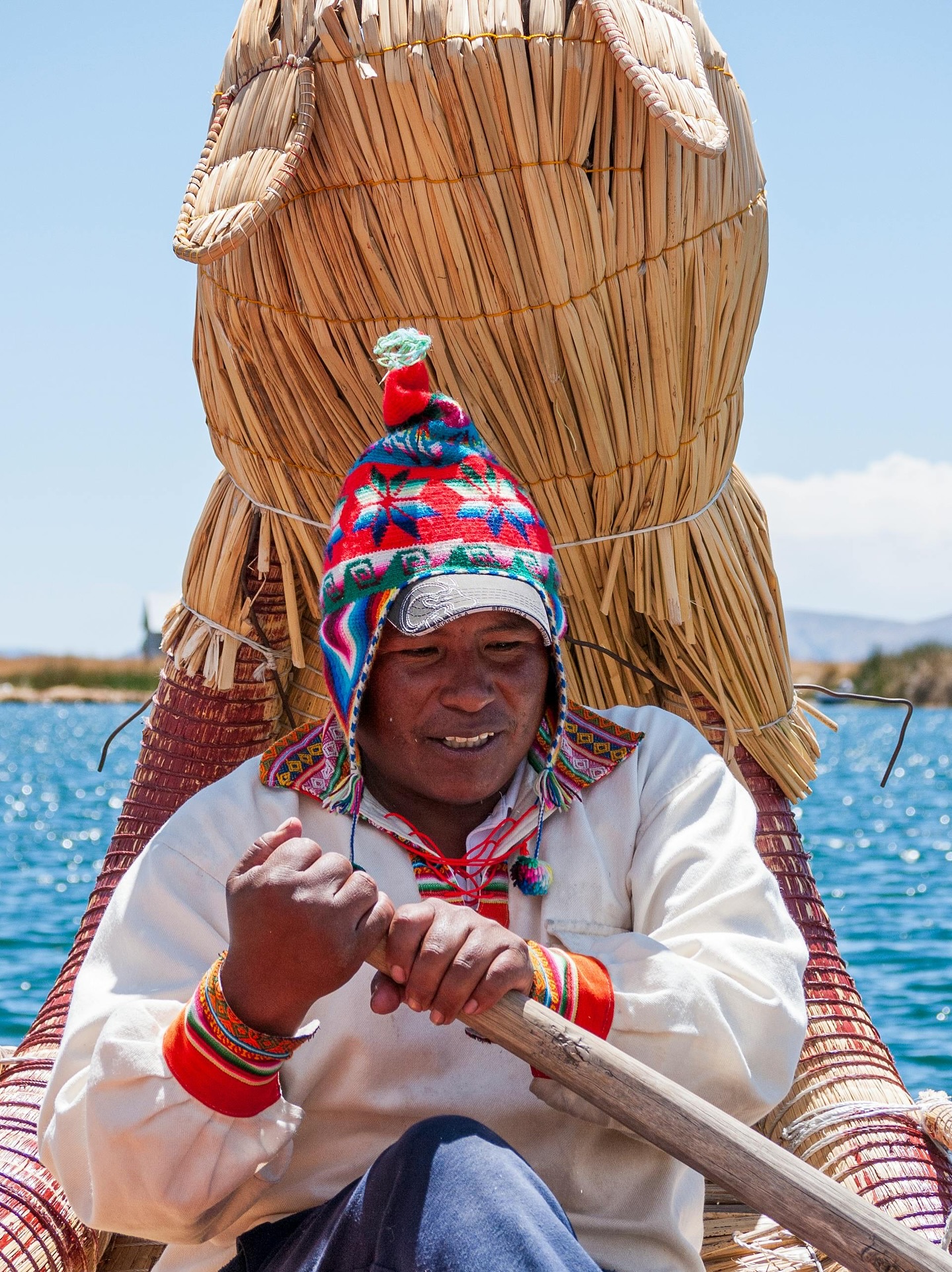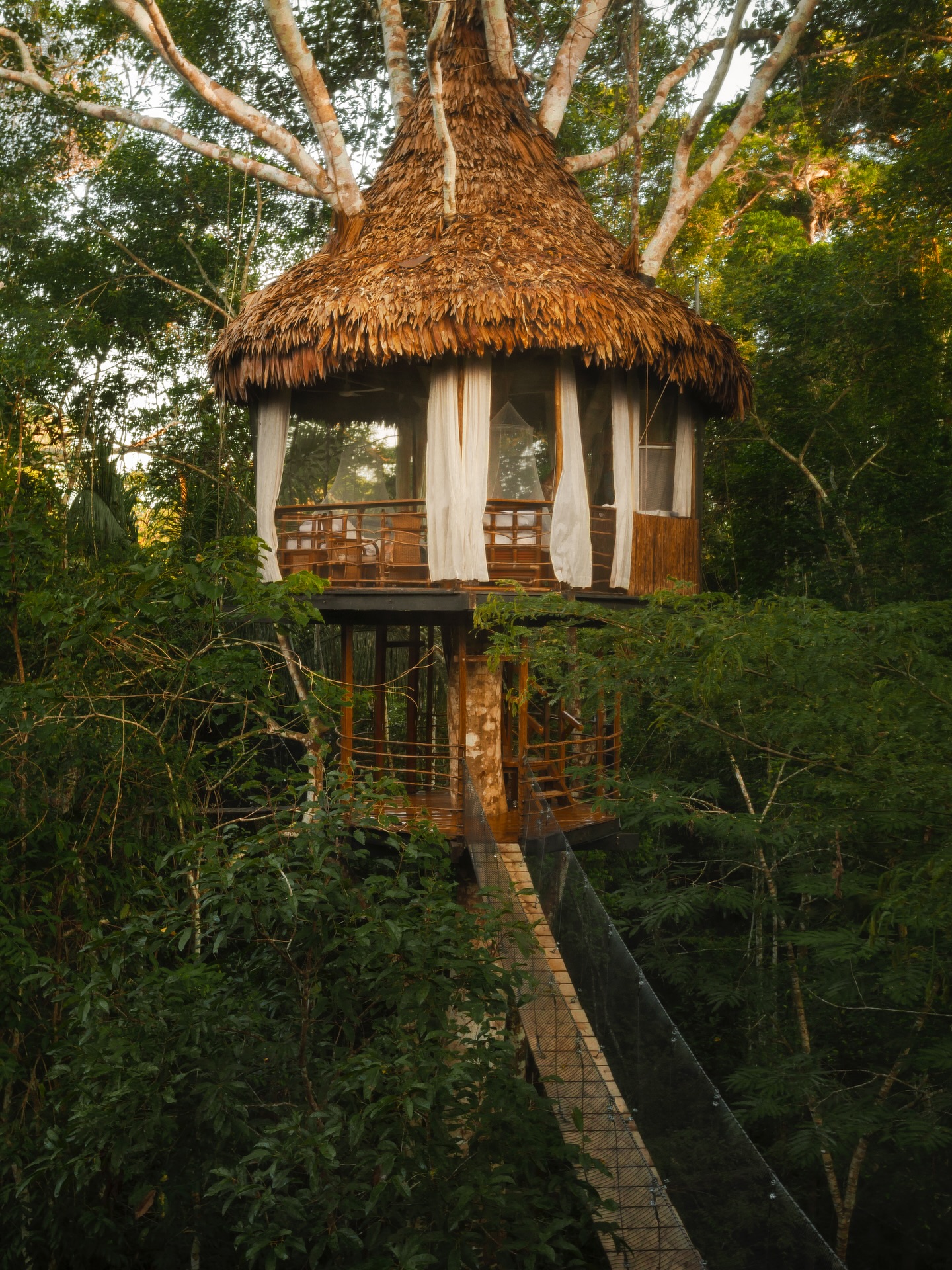Unraveling the Mysteries of Ancient Civilizations in South America
Welcome to an enthralling journey through the historical landmarks of South America! This continent is a treasure trove of diverse cultures, rich history, and architectural marvels that have stood the test of time. South America boasts an array of iconic sites that offer a glimpse into its fascinating past.
Immerse yourself in the vibrant tapestry of South American heritage as we embark on an exploration of the continent's top historical landmarks. Each landmark carries its own significance, telling stories of triumph, mystery, and cultural heritage that have shaped the region's identity.
As we traverse the landscapes of South America, we'll encounter ancient ruins, awe-inspiring statues, and meticulously preserved colonial towns. We'll uncover the secrets of ancient civilizations lost to time and witness the architectural brilliance that has mesmerized visitors for centuries.
From the mist-shrouded mountains of Machu Picchu in Peru, the Lost City of the Incas, to the sun-kissed beaches of Cartagena in Colombia, every step will unveil the layers of history that have shaped South America. Prepare to be captivated by the remnants of ancient empires, the splendor of architectural masterpieces, and the vibrant heritage that pulses through the streets.
Whether you're a history enthusiast, an architecture lover, or simply seeking to expand your horizons, this journey through the historical landmarks of South America promises to be an unforgettable experience. So fasten your seatbelt, pack your curiosity, and join us as we set out to explore the wonders that await in this remarkable continent.
1. Machu Picchu: An Icon of Ancient Civilizations in South America
Welcome to the majestic world of Machu Picchu, the Lost City of the Incas. Nestled high in the Peruvian Andes, this ancient citadel holds a mesmerizing historical background and immense cultural importance. Let's delve deeper into the wonders that await at this iconic landmark.
Machu Picchu carries the remnants of the Inca civilization, dating back to the 15th century. Believed to have served as a royal estate or sacred site, it remained hidden from the world until its rediscovery in 1911. The mysterious abandonment and subsequent rediscovery of Machu Picchu have sparked fascination and intrigue among historians and archaeologists.
The site's cultural importance lies in its preservation of Inca architectural and engineering marvels. Its strategic location, amidst breathtaking natural surroundings, reflects the Inca's deep reverence for the mountains and their sacred connection to the spiritual world.
Prepare to be awestruck by the remarkable architectural feats at Machu Picchu. The precision and intricacy of its stone structures, including temples, terraces, and agricultural areas, showcase the advanced engineering knowledge of the Incas. The intricate stonework, without the use of mortar, has withstood centuries of time and seismic activity.
As you explore the citadel, be prepared to encounter panoramic vistas that will leave you speechless. Surrounded by lush mountains and enveloped in mist, Machu Picchu offers breathtaking views of the Sacred Valley and the iconic peak of Huayna Picchu. It's a photographer's paradise, with every corner revealing a picture-perfect composition.
To make the most of your visit to Machu Picchu, consider the following tips:
- Best Time to Go: The dry season from May to September offers clearer skies and less rainfall, making it ideal for visiting. However, it's also the peak tourist season, so expect larger crowds. The shoulder months of April and October can provide a balance of good weather and fewer visitors.
- Booking Entrance Tickets: Due to its popularity, it's advisable to book your entrance tickets in advance. Limited daily ticket quotas are implemented to preserve the site, so securing your spot early is essential.
- Hiking Options: For those seeking an adventurous experience, consider hiking the Inca Trail, a multi-day trek that culminates in Machu Picchu. Alternatively, the shorter but equally rewarding Huayna Picchu or Machu Picchu Mountain hikes offer stunning views from above the citadel.
- Guided Tours: Opting for a guided tour can enhance your understanding of Machu Picchu's history and significance. Knowledgeable guides can provide fascinating insights into the site's architectural features, rituals, and cultural significance.
- Respectful Visit: As you explore this sacred site, remember to be respectful of its cultural and historical significance. Follow designated paths, refrain from touching or climbing on structures, and carry out any waste you generate.
Embark on a journey to Machu Picchu with our authentic travel options and immerse yourself in the enigmatic allure of this ancient Incan citadel. Discover the mysteries that shroud its past, marvel at its unique architecture, and witness the awe-inspiring vistas that have captivated visitors for generations.
2. Exploring Ancient Civilizations in South America: Unveiling Colombia's Hidden Gem
Immerse yourself in the depths of Colombia's Sierra Nevada de Santa Marta with Travel Differently and uncover a hidden treasure that's a testament to a time long past - La Ciudad Perdida, or the Lost City. This journey isn't for the faint-hearted, but the thrill of uncovering an ancient city deep within the wilderness is an experience that's simply unparalleled.
Believed to have been founded around 800 CE, La Ciudad Perdida served as the heart of the Tayrona civilization. It's fascinating how this magnificent city was abandoned during the Spanish conquest and was left undiscovered for centuries, hidden amidst the dense jungle.
Today, the Lost City offers a profound glimpse into the architectural prowess and cultural heritage of the Tayrona civilization. As you navigate through its ruins, the city's terraced complexes, tiled roads, and circular plazas bring forth an ancient society that thrived in harmony with nature.
The trek to the Lost City isn't just about reaching the destination. It's an immersive journey through Colombia's biodiverse landscape, marked by lush rainforests, crystal-clear streams, and the ascent of ancient stone steps. This 4-day trek promises an enriching experience with opportunities to engage with indigenous communities and learn about their customs.
To make your trek to La Ciudad Perdida truly memorable, consider these tips:
- Best Time to Go: The dry season, from December to March, offers the most comfortable conditions for the trek. Keep in mind, though, that the Sierra Nevada is a rainforest, so some level of rain is to be expected even during these months.
- Fitness Levels: While the trek is moderately challenging, a good level of fitness will make the experience more enjoyable. The trek includes long daily hikes and challenging uphill climbs, so preparing with regular cardio workouts can help.
- Packing Essentials: As this is a multi-day trek, packing lightweight is key. However, ensure to carry essentials like a good pair of hiking shoes, rain gear, a hat or bandana for sun protection, insect repellent, and a water purification system.
- Local Guide: A local guide is not just essential for navigation but MANDATORY, it can also enrich your trekking experience by sharing insights about the local flora, fauna, and the history of the Lost City.
Embark on this enthralling journey with us through our Lost City Trek and Colombia's Hidden Gems package. This meticulously planned itinerary guarantees an authentic experience of Colombia's diverse cultural and natural treasures.
If you're keen on diving deeper into the details of the trek and what to expect, our blog post The Ultimate Guide for the Lost City 4 Days Trek: Colombia's Hidden Gems! is a must-read.
Venturing into Colombia's Lost City offers a unique blend of adventure and cultural immersion. It's not just about reaching the destination but also about appreciating the journey – the trekking challenges, the encounters with local communities, and the overwhelming sense of awe that envelops you as you uncover an ancient city lost in time. For more insights on ancient civilizations in South America, check out our blog for a variety of articles on different historical landmarks and cultural heritage sites across Latin America.
3. Deciphering the Mystery of Easter Island's Moai: Ancient Civilizations in South America

Welcome to the enigmatic world of Easter Island, where the captivating stone statues known as Moai stand as silent guardians of a mysterious past. Let's embark on a journey to unveil the secrets surrounding these imposing figures, delving into their creation, purpose, and the remarkable feat of their transport.
The Moai statues of Easter Island are a testament to the ingenuity and craftsmanship of the Rapa Nui people who inhabited the island centuries ago. These colossal stone figures, carved from volcanic rock, have become synonymous with the island's cultural identity and intrigue visitors with their enigmatic presence.
The creation of the Moai and the purpose behind their construction remain shrouded in mystery. As you explore Easter Island, you'll encounter various theories put forth by archaeologists and historians. From representations of ancestral leaders to protectors of the island, each theory adds to the allure of the Moai.
One of the most puzzling aspects of the Moai is how these massive statues were transported across the island. Marvel at the sheer effort required to carve, move, and erect these colossal figures, some weighing up to 75 tons. The techniques and tools employed by the Rapa Nui people during this monumental endeavor continue to captivate researchers and visitors alike.
To truly immerse yourself in the magic of Easter Island, consider the following recommendations:
- Exploring the Moai: Begin your journey at the Ahu Tongariki, the largest ceremonial platform on the island, where 15 restored Moai stand proudly. Witness the awe-inspiring sight of these monumental statues lined up against the backdrop of the Pacific Ocean. Visit other significant sites, such as Ahu Akivi and Rano Raraku, the quarry where the Moai were carved.
- Rapa Nui National Park: Explore the UNESCO World Heritage site of Rapa Nui National Park, encompassing a significant portion of the island. Wander through the captivating landscapes, encountering not only the Moai but also the volcanic craters, caves, and pristine beaches that contribute to the island's allure.
- Orongo Ceremonial Village: Visit the ancient ceremonial village of Orongo, perched on the rim of a volcanic crater. Gain insights into the fascinating birdman cult, an important cultural and religious practice of the Rapa Nui people.
- Sunset at Ahu Tahai: Witness the magical transformation as the setting sun casts a warm glow on the Moai at Ahu Tahai. This serene and picturesque location offers a breathtaking vista and a tranquil atmosphere.
- Engage with the Local Culture: Interact with the friendly and welcoming Rapa Nui people, learning about their traditions, art, and way of life. Embrace the opportunity to attend a traditional dance performance or visit the local market to experience the vibrant local culture.
Easter Island, with its enigmatic Moai statues and captivating landscapes, invites you to uncover its mysteries and immerse yourself in a world that defies easy explanation. Explore the intriguing theories, marvel at the remarkable stone statues, and embrace the magic that emanates from this remote and alluring island.
4. Chichen Itza: A Glimpse into the Ancient Civilizations in South America

Embark on an enthralling journey to the ancient Mayan city of Chichen Itza, nestled in the heart of Mexico's Yucatan Peninsula. Prepare to be astounded as we delve into the impressive architectural wonders of this ancient civilization in South America, with a special focus on the iconic Kukulkan Pyramid, and explore the astronomical significance that makes Chichen Itza a true wonder of the ancient world.
Chichen Itza stands as a testament to the ingenuity and architectural prowess of the Mayan civilization. As you step foot into this ancient city, you'll be transported back in time, surrounded by the remnants of an advanced society that thrived centuries ago. The site showcases a fusion of Mayan and Toltec influences, resulting in a unique blend of architectural styles.
At the heart of Chichen Itza lies the awe-inspiring Kukulkan Pyramid, also known as El Castillo. This monumental structure, with its precise symmetry and intricate design, symbolizes the Mayan cosmology and their deep connection to astronomy. The pyramid's four staircases, each with 91 steps, and the platform on top, sum up to a total of 365, representing the Mayan calendar's solar year.
Chichen Itza's astronomical significance is most prominently displayed during the equinoxes, when the play of light and shadow creates a mesmerizing phenomenon on the Kukulkan Pyramid. As the sun sets, a shadow resembling a serpent slithers down the northern staircase, gradually joining the stone-carved serpent's head at the base. This spectacle is believed to represent Kukulkan, the feathered serpent deity, descending to Earth.
The equinox phenomenon at Chichen Itza draws visitors from around the world who gather to witness this extraordinary event. It stands as a testament to the Mayan civilization's profound knowledge of astronomy and their ability to align their architectural wonders with celestial events.
To make the most of your visit to Chichen Itza, consider the following recommendations:
- Temple of the Warriors: Explore the Temple of the Warriors, a majestic structure adorned with intricate carvings and columns depicting warriors and mythical creatures. Marvel at the Chac Mool statue, a reclining figure believed to have served as an altar.
- Great Ballcourt: Visit the Great Ballcourt, the largest and most well-preserved ancient Mesoamerican ball court. Learn about the ancient ball game, a significant ritual and sporting event in Mayan culture.
- Sacred Cenote: Discover the Sacred Cenote, a natural sinkhole that held great religious importance for the Mayans. It is believed to have been a site for offerings and rituals.
- Light and Sound Show: If available, consider attending the mesmerizing light and sound show held in the evenings, which brings Chichen Itza's history and legends to life in a captivating way.
As you explore Chichen Itza, let your imagination transport you to the vibrant Mayan civilization that once thrived within these ancient walls. Witness the remarkable architectural achievements, feel the energy of the celestial alignment, and gain a deeper understanding of the rich cultural heritage that Chichen Itza represents. For more insights into the ancient civilizations in South America, visit our blog and explore our authentic travel experiences.
6. Tiwanaku: Unveiling the Mysteries of Ancient Civilizations in South America

Embark on an enlightening journey to uncover the remnants of the ancient Tiwanaku civilization, nestled in the highlands of Bolivia. This historical landmark holds the key to understanding the rich cultural heritage of the Andean people who once flourished in this region. Join us as we explore the architectural wonders, delve into the significance of Tiwanaku as a UNESCO World Heritage site, and unravel the mysteries of one of the most influential ancient civilizations in South America.
Tiwanaku stands as a testament to the ingenuity and cultural prowess of the ancient Andean civilization. As you step foot into this sacred site, you'll be transported back in time, surrounded by the remnants of an advanced society that flourished over a thousand years ago. Tiwanaku was the political and religious capital of a vast empire that extended across the Andean region, leaving behind a profound legacy.
Tiwanaku is renowned for its impressive architectural feats, showcasing the advanced engineering and artistic skills of its builders. Marvel at the Gate of the Sun, a stone arch adorned with intricate carvings that depict celestial deities and symbols of power. This monumental gateway served as a ceremonial entrance to the sacred complex and is considered a masterpiece of Andean artistry.
Explore the Akapana pyramid, an imposing stepped structure that stands as a testament to the monumental construction techniques employed by the Tiwanaku civilization. Climb to the top and take in panoramic views of the surrounding landscape, imagining the vibrant city that once thrived beneath your feet.
Tiwanaku's historical and cultural significance led to its designation as a UNESCO World Heritage site. The site represents the development of a sophisticated Andean civilization, marked by exceptional architectural achievements and profound cultural practices. As a UNESCO site, Tiwanaku is recognized as a place of universal value, preserving the legacy of the Andean people for future generations.
To make the most of your visit to Tiwanaku, consider the following recommendations:
- Kalasasaya Temple: Explore the Kalasasaya Temple, a sacred space characterized by its massive stone pillars and intricate carvings. Marvel at the monolithic Gate of the Sun and imagine the rituals and ceremonies that took place within these hallowed grounds.
- Tiwanaku Museum: Visit the Tiwanaku Museum, located near the archaeological site, to gain deeper insights into the history, culture, and artifacts of the Tiwanaku civilization. Admire the intricate pottery, ornate jewelry, and finely crafted textiles that showcase the artistic skills of this ancient civilization.
- Pumapunku: If time permits, venture to nearby Pumapunku, an archaeological site that showcases another impressive complex of stone structures. Marvel at the precision of the stone-cutting techniques and ponder the mysteries surrounding this enigmatic site.
As you explore Tiwanaku, let the ancient stones whisper stories of a vibrant civilization that thrived amidst the Andean highlands. Immerse yourself in the architectural wonders, feel the spiritual energy that still permeates the site, and gain a deeper understanding of the cultural legacy left behind by the Tiwanaku civilization. For more insights and travel experiences in Bolivia, check out our authentic travel experiences and blog posts.
7. Uncovering El Tazumal: A Glimpse into the Ancient Civilizations in South America
.avif)
Embark on a journey to El Salvador, a Latin American country steeped in history and rich in cultural heritage. Here, you'll discover El Tazumal, an awe-inspiring archaeological site that offers a fascinating insight into the ancient civilizations in South America. In this section, we will reveal the secrets of El Tazumal, delve into its historical significance, and invite you to immerse yourself in the mysteries of this captivating Mayan site.
Located in the city of Chalchuapa, El Tazumal is an archaeological complex that showcases the architectural prowess and cultural achievements of the ancient Mayan civilization. As you venture through this sacred site, you'll encounter impressive pyramids, ceremonial plazas, and intricate sculptures that tell stories of a vibrant society that thrived here over a thousand years ago.
El Tazumal holds immense historical significance as one of the largest Mayan ruins in El Salvador. The site was inhabited by the Mayan people from as early as 400 AD until the 12th century. It served as a center for religious ceremonies, civic gatherings, and trade, attesting to the importance of El Tazumal within the region.
Marvel at the centerpiece of El Tazumal, the Great Pyramid, also known as Structure B1-1. This imposing structure stands as a testament to the architectural ingenuity of the Mayan civilization. Ascend its steps and reach the summit to enjoy panoramic views of the surrounding landscape, imagining the bustling city that once thrived below.
Explore the Temple of the Columns, adorned with intricately carved columns depicting gods and mythological creatures. This ceremonial structure exemplifies the intricate stonework and artistic skill of the Mayan craftsmen.
Enhance your visit to El Tazumal by exploring the on-site museum and interpretive center. Immerse yourself in the rich history and culture of the Mayan civilization through a collection of artifacts, including pottery, jewelry, and tools. Gain deeper insights into the customs, religious practices, and daily life of the Mayan people who once called El Tazumal home.
El Tazumal serves as a source of pride for the local community, and their dedication to its preservation and promotion is evident. Engage with knowledgeable local guides who can provide fascinating insights into the site's history and significance. By visiting El Tazumal, you contribute to the ongoing preservation efforts and support the local economy.
El Tazumal stands as a testament to the rich cultural heritage of the Mayan civilization in El Salvador. Explore the ancient ruins, marvel at the architectural wonders, and let the stories of the past come alive as you wander through this archaeological gem. El Tazumal invites you to step back in time, unravel the mysteries of the Mayan civilization, and appreciate the enduring legacy they left behind in the heart of El Salvador. For more in-depth exploration of such historical landmarks, consider our authentic travel packages that offer immersive experiences in various countries across Latin America.
Conclusion: Unraveling the Mysteries of Ancient Civilizations in South America
In this article, we have embarked on a captivating journey to explore the diverse historical landmarks of South America. From the ancient Mayan ruins of El Tazumal in El Salvador to the enigmatic stone statues of Easter Island's Moai, and from the majestic Incan citadel of Machu Picchu to the astronomical wonders of Chichen Itza in Mexico, we have delved into the rich cultural heritage and architectural marvels that grace this remarkable continent.
Tiwanaku in Bolivia revealed the remnants of an ancient Andean civilization, while Cusco, the historic capital of the Inca Empire, offered a glimpse into Inca traditions and vibrant festivals. Each of these landmarks has its own unique story to tell, representing different civilizations, time periods, and cultural influences that have shaped South America's rich tapestry.
We encourage you, dear readers, to embark on your own South American adventure and discover these iconic sites firsthand. Immerse yourself in the history, marvel at the architectural wonders, and embrace the cultural richness that awaits you. Let the ancient stones whisper tales of civilizations long gone and ignite your imagination.
As you explore these historical landmarks, we invite you to share your experiences with us and fellow travelers. Leave comments, share photos, and engage with others who have been captivated by the beauty and significance of these sites. By sharing your stories, you contribute to the collective appreciation and understanding of South America's historical treasures.
So, whether you choose to trek through the Andean mountains to reach the hidden city of Machu Picchu, witness the equinox phenomenon at Chichen Itza, or gaze in awe at the mysterious Moai statues on Easter Island, let your South American adventure be a journey of discovery, wonder, and cultural immersion. The historical landmarks of South America await, ready to captivate your senses and leave an indelible mark on your soul.
Are you ready to embark on this extraordinary adventure? Pack your bags, follow the footsteps of ancient civilizations, and create memories that will last a lifetime. South America's historical treasures are waiting to be explored. Bon voyage!
{{component-create-my-trip="/"}}


.avif)



.avif)

.avif)
.png)

